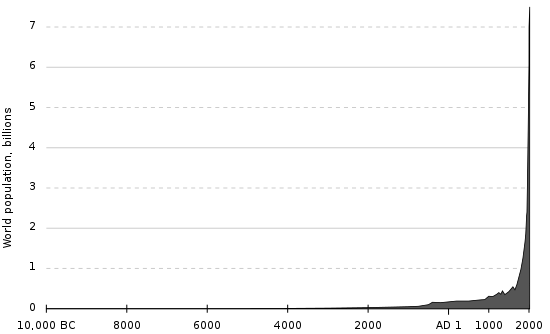Lazy Knight
Chieftain
Hi all,
It is no secret that the industrialisation is portrayed very poorly in CiV and I must admit I do not know how much this has changed in VEM. From my perspective, the so called "industrial era" of CiV should receive a major revamp. I think this era was a turning point in history (just look at this graph)

and gave rise to new powers in the world (e.g. US, UK (not new, I admit), Germany) while other nations stayed behind.
A lot could be done by rearranging technologies to emphasize this era (Steel(!), metallurgy, chemistry, railroads, elicitricity, there is just so much wrong here)
But the main idea which should also shake existing power-distributions in this era is tying strategic ressources into the building part of the game. Notably existence of coal and iron would allow a civ to excel in this era.
This makes the game more interesting because:
There are some difficulties though, two spring to my mind immediatly
Here are some building suggestions which could replace buildings or be added, which would cost a strategic ressource. All of these are of course just suggestion but I would like to not focus any discussion on the specifics of the buildings for now, but rather the concept in general. The buildings are just for illustration purposes.
Horses
Trading post
+1 , +1
, +1 , +1c5gold
, +1c5gold
requires 1 Horse
Stable (changed)
+ 15% production
requires 1 Horse
Iron
Forge (changed)
+15%
requires 1 Iron
Coal
Coal Plant
provides 1 unit of Elicitricity
costs 1 Coal
Textile Mill
+ , +
, + , +
, +
costs 1 coal
Train Station
+ , +
, +
costs 1 coal and 1 iron
Steel
Steelworks
provides 2 units of steel
requires 1 unit of coal and 1 unit of iron
Factory
+ , +
, +
requires 1 unit of steel
Oil
Refinery
Chemical Plant
Aluminium
Elictricity
Power Plants (Hydro, Solar, Coal Plant, Nuclear Plant) provide elictricity
Late game buildings (Labs, Broadcast Tower) could require elictricity
Uranium
Nuclear Plant (Unchanged)
I am fairly certain more creative people than me could think of tons of more buildings to add to the zoo. The idea could also be expanded somewhat to other ressources, notably stone, textiles come to mind, but it'd then compete with the system which requires local ressources, which may or not may be a good thing.
It is no secret that the industrialisation is portrayed very poorly in CiV and I must admit I do not know how much this has changed in VEM. From my perspective, the so called "industrial era" of CiV should receive a major revamp. I think this era was a turning point in history (just look at this graph)
Spoiler :

and gave rise to new powers in the world (e.g. US, UK (not new, I admit), Germany) while other nations stayed behind.
A lot could be done by rearranging technologies to emphasize this era (Steel(!), metallurgy, chemistry, railroads, elicitricity, there is just so much wrong here)
But the main idea which should also shake existing power-distributions in this era is tying strategic ressources into the building part of the game. Notably existence of coal and iron would allow a civ to excel in this era.
This makes the game more interesting because:
- There would always be a kind of tradeoff wether you want to spend your ressource on improving the economy or improving your military.
- It would also change the choice of building based on your ressource situation and thus make the building side of games more varied
- It would increase the value of strategic ressources
- It could make early game ressources relevant in the late game
There are some difficulties though, two spring to my mind immediatly
- Investments in buildings are long-term, units obsolete after a time. There needs to be some kind of balancing.
- Can the AI deal with it?
Here are some building suggestions which could replace buildings or be added, which would cost a strategic ressource. All of these are of course just suggestion but I would like to not focus any discussion on the specifics of the buildings for now, but rather the concept in general. The buildings are just for illustration purposes.
Horses
Trading post
+1
 , +1
, +1 , +1c5gold
, +1c5goldrequires 1 Horse
Stable (changed)
+ 15% production
requires 1 Horse
Iron
Forge (changed)
+15%

requires 1 Iron
Coal
Coal Plant
provides 1 unit of Elicitricity
costs 1 Coal
Textile Mill
+
 , +
, + , +
, +
costs 1 coal
Train Station
+
 , +
, +
costs 1 coal and 1 iron
Steel
Steelworks
provides 2 units of steel
requires 1 unit of coal and 1 unit of iron
Factory
+
 , +
, +
requires 1 unit of steel
Oil
Refinery
Chemical Plant
Aluminium
Elictricity
Power Plants (Hydro, Solar, Coal Plant, Nuclear Plant) provide elictricity
Late game buildings (Labs, Broadcast Tower) could require elictricity
Uranium
Nuclear Plant (Unchanged)
I am fairly certain more creative people than me could think of tons of more buildings to add to the zoo. The idea could also be expanded somewhat to other ressources, notably stone, textiles come to mind, but it'd then compete with the system which requires local ressources, which may or not may be a good thing.

